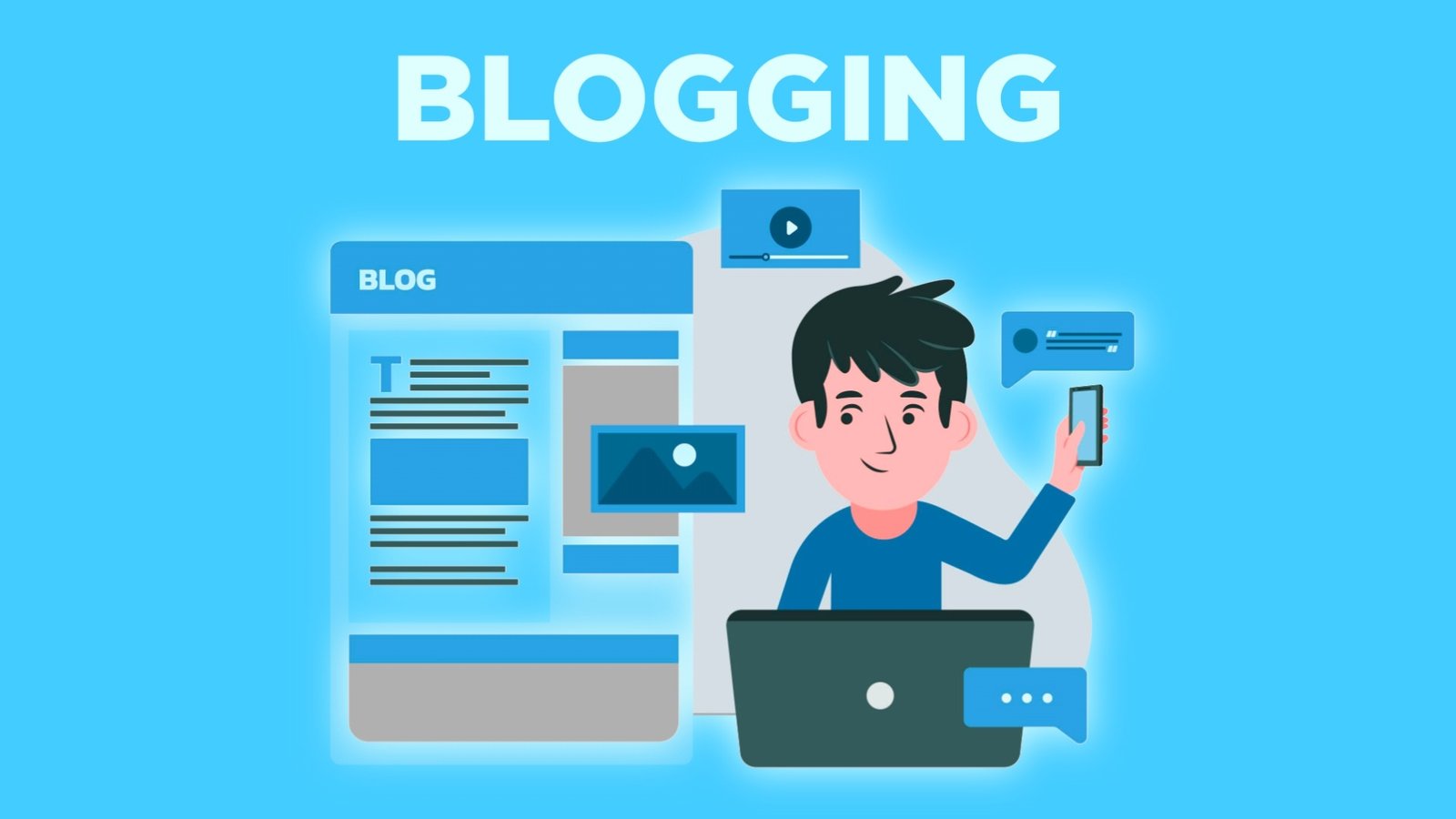In the fast-paced digital world, keeping up with content creation can be tough. That’s where AI writing tools come in. These tools help you write faster, generate ideas, and improve your content’s quality. This article will explore how to use AI to make your blogs better, focusing on practical and easy-to-follow tips.
Understanding AI Writing Tools
What Are AI Writing Tools?
AI writing tools are software programs that use artificial intelligence to assist with writing tasks. They can generate text, correct grammar, and suggest improvements.
Popular tools include Grammarly, Jasper (formerly Jarvis), and Copy.ai. These tools use complex algorithms to understand and mimic human language, making them incredibly useful for bloggers.
Why Should You Use AI Writing Tools?
Using AI writing tools can save you time and effort. They help streamline the writing process by handling tedious tasks like proofreading and formatting.
AI tools also offer new perspectives and ideas, sparking creativity when you’re stuck. For bloggers, these benefits translate to more content, improved quality, and better engagement with readers.
Getting Started with AI Writing Tools
To begin, choose the right AI tool for your needs. For grammar and style enhancements, Grammarly is excellent.
For content generation and idea creation, Jasper or Copy.ai are great options. Familiarize yourself with your chosen tool through tutorials and practice. Each tool has unique features that can greatly enhance your blogging efforts.
Generating Blog Ideas with AI
Brainstorming with AI
Coming up with fresh blog ideas can be challenging. AI tools simplify this by generating ideas based on keywords you provide.
For instance, if you’re blogging about “healthy eating,” the AI might suggest topics like “easy healthy recipes” or “benefits of a balanced diet.” This feature is especially useful for breaking through writer’s block.
Creating Outlines
Once you have a topic, the next step is to create an outline. An outline helps organize your thoughts and ensures your blog post is coherent.
AI tools can generate outlines by breaking down your topic into subtopics and key points. This helps structure your blog post, making it easier to write and ensuring you cover all relevant aspects.
Enhancing Creativity
AI writing tools not only help with structure but also boost creativity. They can suggest different angles or perspectives on a topic, providing fresh ideas that you might not have considered.
This can be particularly helpful when you’re feeling uninspired. Input a rough idea, and let the AI suggest various ways to develop it.
Writing with AI Assistance
Drafting Your Blog
Drafting is often the most time-consuming part of writing. AI tools can speed up this process by generating text based on your outlines or prompts.
This is particularly useful for getting past the initial draft stage quickly. Once you have a rough draft, you can refine and personalize it to match your voice and style.
Improving Readability
Readability is crucial for keeping your audience engaged. AI tools can analyze your text and suggest ways to make it more readable.
This includes simplifying complex sentences, breaking up long paragraphs, and using a more conversational tone. The goal is to make your content easy to read and understand, ensuring that your readers stay engaged from start to finish.
Grammar and Style Checks
Mistakes in grammar and style can undermine the credibility of your blog. AI tools like Grammarly automatically detect and correct these issues.
They can also offer style suggestions, such as using active voice instead of passive voice, varying sentence structure, and improving word choice. This ensures your content is polished and professional.
Optimizing for SEO
Leveraging AI for Advanced Keyword Research
Advanced keyword research is foundational for effective SEO. AI tools can go beyond basic keyword suggestions to provide comprehensive insights into search intent, competition, and long-tail opportunities.
For startup founders, this means you can pinpoint exactly what your target audience is searching for and tailor your content accordingly.
Start by using AI to identify high-impact keywords that align with your business goals. These tools can analyze large datasets to uncover keywords with high search volumes but low competition.
Incorporate these keywords naturally into your content to improve your chances of ranking higher on search engine results pages (SERPs). AI can also help you find related keywords and phrases that can enhance your content’s relevancy and breadth, making it more appealing to search engines.
Content Gap Analysis
AI tools can perform content gap analysis by comparing your existing content with that of your competitors. This process identifies topics and keywords that your competitors rank for, but you do not.
For startup founders, filling these gaps is a strategic way to capture additional traffic and establish authority in your niche.
Analyze the top-performing content in your industry using AI to identify key themes and questions that are not adequately covered on your blog. Develop new content that addresses these gaps, ensuring it is comprehensive and provides unique value.
This approach not only improves your SEO but also positions your blog as a more complete resource for your audience.
Optimizing Content Structure
The structure of your content plays a significant role in SEO. AI tools can help you optimize this by suggesting the ideal layout based on top-performing articles in your niche.
This includes recommendations for headings, subheadings, and the placement of keywords.
A well-structured article is not only easier for readers to navigate but also more likely to be favored by search engines. Use AI to ensure your content follows a logical flow and includes all necessary elements such as introduction, body, and conclusion.
Additionally, AI can suggest the optimal placement of multimedia elements like images and videos, which can further enhance user engagement and SEO.
Improving User Experience (UX)
Search engines increasingly prioritize user experience as a ranking factor. AI tools can analyze your blog’s UX and provide actionable recommendations for improvement.
This might include enhancing page load speed, ensuring mobile-friendliness, and improving overall site navigation.
For startup founders, focusing on UX can significantly impact your SEO efforts. Use AI to identify and fix technical issues that might be hindering your site’s performance.
Ensure that your content is easily accessible and provides a seamless experience across all devices. A positive user experience not only boosts your search engine rankings but also encourages repeat visits and longer engagement times.
Local SEO Optimization
For startups targeting local markets, optimizing for local SEO is crucial. AI tools can help you identify local keywords and optimize your content accordingly.
This involves incorporating location-specific terms into your content, meta descriptions, and alt texts.
AI can also help manage and optimize your Google My Business profile, ensuring your business information is accurate and up-to-date. Encourage customer reviews and engage with your audience through local listings to boost your local search visibility.
For startup founders, effective local SEO can drive targeted traffic and increase your visibility within the community.
Utilizing AI for Content Refresh
Content decay is a natural phenomenon where older content loses its search engine ranking over time. AI tools can help identify which of your blog posts are experiencing decay and provide recommendations for refreshing them.
This might include updating outdated information, adding new sections, or optimizing for new keywords.
Regularly refreshing your content ensures it remains relevant and continues to attract traffic. For startup founders, this strategy can help maintain a steady flow of organic traffic and ensure that your content investment continues to pay off over time.
Optimizing for Featured Snippets and Rich Results
Featured snippets and rich results are prime real estate on SERPs, often appearing above regular search results. AI tools can help optimize your content to increase the chances of being selected for these coveted positions.
This involves structuring your content to directly answer common questions and using formats like lists, tables, and bullet points where appropriate.
Analyze the types of content that currently occupy featured snippets for your target keywords. Use AI to structure your content in a similar format, ensuring it provides clear, concise answers.
Being featured in snippets can significantly boost your visibility and drive more traffic to your blog.
Advanced Link Building Strategies
Backlinks are a critical factor in SEO, and AI can help streamline your link-building efforts. AI tools can identify high-authority websites in your niche and suggest potential link-building opportunities.
This might include guest posting, partnerships, or content collaborations.
For startup founders, building a robust backlink profile can improve your domain authority and search engine rankings. Use AI to track your link-building progress and identify new opportunities as they arise.
This strategic approach ensures your efforts are targeted and effective, maximizing your SEO benefits.
Content Personalization for SEO
Personalized content can improve engagement and reduce bounce rates, both of which are important for SEO. AI tools can analyze user behavior to deliver personalized content recommendations.
For instance, if a reader frequently visits your blog for a specific type of content, AI can highlight similar articles on your site.
Implementing personalization strategies can enhance the user experience, making visitors more likely to stay longer and explore more pages. For startup founders, this not only boosts engagement metrics but also sends positive signals to search engines about the relevance and quality of your content.
Enhancing Engagement with AI

Crafting Engaging Introductions
The introduction is the first thing readers see, and it sets the tone for the rest of the blog. AI tools can help craft engaging introductions that grab attention and entice readers to continue.
Input your main topic and key points, and the AI can suggest an opening that is interesting and relevant. This could include a surprising fact, a compelling question, or a relatable anecdote.
Developing Strong Headlines
Headlines are critical for attracting readers. A good headline is clear, intriguing, and promises value. AI tools can generate multiple headline options based on your content.
Experiment with different suggestions to find the one that best captures your audience’s interest. For instance, instead of a generic headline like “Tips for Healthy Eating,” an AI-generated headline might be “10 Surprising Tips for Effortless Healthy Eating.”
Building Engaging Content
To keep readers engaged, your content needs to be interesting and interactive.
AI tools can suggest ways to make your blog more engaging, such as incorporating storytelling elements, asking questions to encourage reader reflection, or adding relevant examples and anecdotes. These techniques help make your content more relatable and compelling.
Personalizing Content
Personalized content resonates more with readers. AI tools can analyze your audience’s preferences and suggest ways to tailor your content.
This could involve adjusting the tone to match your audience’s preferences, addressing specific pain points, or incorporating relevant examples and references that your readers will find interesting.
Using Multimedia
Incorporating multimedia elements like images, videos, and infographics can significantly enhance your blog’s engagement.
AI tools can suggest where to place these elements within your content to maximize impact. They can also help generate captions and descriptions that improve SEO and provide additional context for your readers.
Editing and Refining Your Blog
Detailed AI-Powered Editing
For startup founders, maintaining high-quality content is crucial for establishing credibility and attracting readers. AI-powered editing tools like Grammarly and ProWritingAid can significantly enhance the editing process.
These tools provide detailed feedback on grammar, punctuation, and style, ensuring your content is polished and professional.
Start by inputting your draft into an AI editing tool. Review the suggested corrections and improvements, paying close attention to common errors and style inconsistencies.
Use these insights to refine your writing and develop a consistent tone across all your blog posts. This level of detailed editing helps eliminate mistakes that can distract readers and undermine your authority.
Refining Content Structure
A well-structured blog post is easier to read and more engaging. AI tools can analyze your content structure and suggest ways to improve it.
This includes optimizing paragraph length, ensuring a logical flow of ideas, and enhancing the overall readability of your post.
For example, if your blog post contains long, dense paragraphs, AI can recommend breaking them into shorter, more digestible chunks. It can also suggest reordering sections to improve the narrative flow, making your content more coherent and compelling.
For startup founders, refining content structure with AI ensures your blog posts are user-friendly and keep readers engaged.
Enhancing Clarity and Conciseness
Clarity and conciseness are key to effective communication. AI tools can help identify areas where your writing may be verbose or unclear.
Use these tools to pinpoint and revise complex sentences, remove redundant phrases, and simplify your language.
For instance, if a sentence is overly complicated, AI can suggest a more straightforward alternative. This not only makes your content more accessible but also more impactful.
For startup founders, enhancing clarity and conciseness ensures your message is communicated effectively, making your content more persuasive and engaging.
Tone and Voice Consistency
Consistency in tone and voice is crucial for building a recognizable brand identity. AI tools can analyze your writing to ensure it aligns with your desired tone, whether it’s formal, casual, authoritative, or friendly. By maintaining a consistent voice, you create a cohesive reading experience that resonates with your audience.
Input samples of your writing into an AI tool to receive feedback on tone consistency. Use this feedback to adjust your writing, ensuring each blog post reflects your brand’s unique voice.
For startup founders, this level of consistency strengthens your brand identity and helps build a loyal readership.
Optimizing Readability
Readability plays a significant role in reader engagement. AI tools like Hemingway App can help ensure your content is easy to read and understand.
These tools highlight complex sentences, passive voice, and other readability issues, providing actionable suggestions for improvement.
For example, Hemingway App assigns a readability grade to your content, indicating the education level required to understand it. Aim for a readability grade that matches your target audience.
For startup founders, optimizing readability ensures your content is accessible to a broader audience, enhancing engagement and retention.
Real-Time Collaboration and Feedback
Collaboration is key to refining your blog content. AI tools can facilitate real-time collaboration, allowing multiple team members to work on the same document simultaneously.
These tools provide instant feedback on grammar, style, and structure, streamlining the editing process.
For startups with a team of writers, real-time collaboration tools like Google Docs integrated with AI editing plugins can enhance productivity and ensure consistent quality.
This collaborative approach allows for diverse input and feedback, resulting in well-rounded and thoroughly refined content.
Leveraging AI for Different Types of Blog Content
Informative Blog Posts
For informative posts, AI tools can help you gather and organize information, ensuring your content is comprehensive and well-researched. They can suggest sources, provide summaries, and even help structure your content to ensure it covers all necessary points.
Opinion Pieces
Opinion pieces benefit from a strong, clear voice and persuasive arguments. AI tools can help enhance your writing by suggesting ways to strengthen your arguments and make your voice more compelling.
They can also ensure your content remains respectful and balanced, even when presenting strong opinions.
How-To Guides
How-to guides need to be clear and easy to follow. AI tools can help by suggesting step-by-step structures and ensuring your instructions are clear and concise.
They can also recommend additional tips and best practices to enhance your guide.
Listicles
Listicles are popular for their easy-to-read format. AI tools can help you generate list items based on your main topic and suggest ways to make each item interesting and valuable.
They can also ensure your listicle is well-structured and engaging from start to finish.
Case Studies
Case studies need to be detailed and data-driven. AI tools can help you organize your information and present it clearly.
They can suggest ways to highlight key points and ensure your case study tells a compelling story that resonates with your audience.
Using AI for Enhanced User Engagement

Personalizing Reader Experience
Personalization is a powerful way to engage readers, and AI can help you tailor content to individual preferences. By analyzing reader behavior and interaction with your content, AI tools can suggest personalized content recommendations.
This might include suggesting related articles at the end of a blog post or customizing the content layout based on the reader’s past behavior.
This personalized approach not only enhances user experience but also increases the likelihood of readers returning to your blog. It makes your audience feel valued and understood, fostering a stronger connection with your brand.
Dynamic Content Adaptation
AI tools can help adapt your content dynamically based on real-time user interactions. For instance, if a reader spends more time on certain sections of your blog, AI can suggest expanding those sections or creating follow-up posts on similar topics.
This real-time feedback loop ensures your content remains relevant and engaging, adapting to the evolving interests of your readers.
Interactive Content
Interactive content such as quizzes, polls, and surveys can significantly boost reader engagement. AI tools can help create and integrate these interactive elements seamlessly into your blog posts.
They analyze user responses to provide insights into reader preferences and interests, which can then be used to tailor future content.
Interactive content not only engages readers but also provides valuable data that can inform your content strategy. It transforms passive readers into active participants, making your blog more engaging and memorable.
Advanced SEO Strategies with AI
Voice Search Optimization
With the growing popularity of voice-activated assistants like Siri and Alexa, optimizing your content for voice search is becoming increasingly important.
AI tools can help you understand how people phrase their voice search queries, which are often more conversational and question-based compared to text searches.
Incorporate these natural language queries into your content to improve your chances of appearing in voice search results. For example, instead of using a keyword like “best running shoes,” you might optimize for “What are the best running shoes for beginners?”
This approach ensures your content is optimized for both traditional and voice search, broadening your reach.
Semantic SEO
Semantic SEO focuses on understanding the intent behind search queries rather than just matching keywords. AI tools can analyze search patterns and suggest ways to optimize your content to align with user intent.
This involves using related terms, synonyms, and contextually relevant information that provide comprehensive answers to search queries.
By focusing on the overall topic rather than just specific keywords, you can create more in-depth and valuable content that satisfies user intent. This not only improves your search engine rankings but also enhances the user experience, leading to higher engagement and retention.
Featured Snippets
Featured snippets are selected search results that appear at the top of Google’s organic search results, providing direct answers to user queries.
AI tools can help you optimize your content to increase the chances of being featured in these snippets. They analyze the types of queries that trigger featured snippets and suggest how to structure your content to meet these criteria.
This might involve using clear headings, concise answers, and bullet points (even though we’re minimizing lists here) to format your content in a way that is snippet-friendly.
Being featured in snippets can significantly boost your visibility and drive more traffic to your blog.
AI for Content Monetization
Ad Optimization
If your blog relies on advertising revenue, optimizing ad placements is crucial.
AI tools can analyze user behavior to determine the best locations for ads, maximizing click-through rates and revenue without disrupting the user experience. By balancing ad visibility with content readability, AI ensures your monetization strategies are effective and user-friendly.
Affiliate Marketing
For blogs that utilize affiliate marketing, AI can help by suggesting products and services that align with your content and audience interests.
AI tools can analyze the performance of different affiliate links and recommend the most profitable partnerships. This targeted approach ensures that the products you promote are relevant to your readers, increasing the likelihood of conversions.
Subscription Models
If you’re considering a subscription model for premium content, AI can help identify the types of content that your audience is willing to pay for. Analyze user engagement and feedback to determine what content adds the most value.
AI tools can also help segment your audience, allowing you to offer personalized subscription plans that cater to different user needs and preferences.
Future Trends in AI Writing
Natural Language Generation
Natural Language Generation (NLG) is an advanced AI technology that can create human-like text from data.
Future developments in NLG will enable even more sophisticated content creation, allowing AI to generate entire blog posts that are indistinguishable from those written by humans. This will further streamline the content creation process, allowing you to focus on strategy and creativity.
Emotion AI
Emotion AI, also known as affective computing, can analyze and respond to human emotions.
Integrating Emotion AI into your content strategy can help tailor your writing to evoke specific emotional responses from your readers. This can enhance engagement and connection, making your content more impactful and memorable.
AI-Powered Visual Content
AI is not limited to text; it’s also transforming visual content creation. Future AI tools will offer enhanced capabilities for generating images, infographics, and videos.
Integrating these visuals into your blog can significantly boost engagement and make your content more appealing and accessible.
Building a Sustainable Content Strategy
Setting Goals
A successful content strategy starts with clear goals. Whether you want to increase traffic, boost engagement, or generate leads, AI tools can help you set realistic targets.
They analyze historical data and industry benchmarks to suggest achievable goals for your blog.
Content Planning
Planning is key to maintaining a consistent content schedule. AI tools can help you create a content calendar that aligns with your goals and audience interests.
They suggest topics based on current trends, seasonal events, and your target keywords. This proactive approach ensures you always have a pipeline of fresh content ideas.
Audience Insights
Understanding your audience is crucial for creating content that resonates. AI tools analyze your audience’s behavior, preferences, and demographics to provide detailed insights.
Use this information to tailor your content to their interests and needs. For example, if your audience prefers video content, consider creating video blogs or adding multimedia elements to your posts.
Adapting to Trends
The digital landscape is constantly evolving, and staying ahead of trends is essential. AI tools monitor industry trends and social media conversations to identify emerging topics.
They can suggest timely content ideas that tap into current discussions and interests. By staying relevant, you keep your audience engaged and attract new readers.
Enhancing Collaboration with AI
Streamlining Teamwork
For startups with a team of writers, collaboration is key. AI tools can streamline the collaborative process by providing a centralized platform for content creation.
Team members can work on the same document simultaneously, with the AI providing real-time feedback on grammar, style, and structure. This ensures consistency and quality across all content.
Managing Workflow
Managing the content creation workflow can be challenging, especially for growing startups. AI tools can help by tracking progress and setting deadlines for each stage of the writing process.
They send reminders and notifications to keep the team on track, ensuring that content is delivered on time.
Quality Control
Maintaining high-quality content is crucial for building a reputable brand. AI tools can act as an additional layer of quality control.
They review drafts for errors, suggest improvements, and ensure that the content meets your brand’s standards. This reduces the workload on editors and ensures that every piece of content is polished and professional.
Future of AI in Content Writing
Continuous Advancements
AI technology is continually evolving, with new advancements enhancing its capabilities. Future AI writing tools will offer even more sophisticated features, such as advanced natural language understanding, personalized content recommendations, and real-time translation.
Staying updated with these developments will ensure you can leverage the latest tools to enhance your content.
Ethical Considerations
As AI tools become more integrated into content creation, it’s important to consider ethical implications. Ensure that your use of AI is transparent and that you maintain a balance between automation and human creativity.
While AI can significantly enhance efficiency, human oversight is crucial to maintain authenticity and ethical standards.
Embracing Human-AI Collaboration
The future of content writing lies in effective human-AI collaboration. By combining the efficiency and analytical power of AI with human creativity and insight, you can create content that is both high-quality and highly engaging.
Embrace AI as a collaborative partner, continuously seeking ways to optimize this partnership for better results.
Leveraging AI for Content Distribution

Scheduling and Posting
Once your blog post is ready, the next step is to distribute it effectively. AI tools can help you schedule and post your content across various platforms.
They analyze the best times to post based on your audience’s online activity, ensuring maximum visibility and engagement. By automating the scheduling process, you can maintain a consistent posting schedule without manually managing each post.
Social Media Promotion
Promoting your blog on social media is crucial for driving traffic. AI tools can craft social media posts that are optimized for engagement.
They suggest the best hashtags, keywords, and even the ideal length for your posts. Additionally, AI tools can analyze past performance to recommend the type of content that resonates most with your followers.
Email Marketing
Email newsletters are a powerful way to keep your audience engaged. AI tools can help create compelling email content that highlights your latest blog posts.
They can segment your audience based on their interests and engagement levels, ensuring that your emails are personalized and relevant. This targeted approach increases open rates and click-through rates, driving more traffic to your blog.
Analyzing Performance
After distributing your content, it’s important to analyze its performance. AI tools provide detailed analytics on how your blog posts are performing across different platforms.
They track metrics like page views, time on page, bounce rates, and social shares. Use these insights to understand what types of content are most effective and adjust your strategy accordingly.
Wrapping it up
Enhancing your blogs with AI writing tools offers startup founders a powerful way to improve content quality, engage readers, and optimize for SEO. By leveraging AI for idea generation, drafting, editing, and real-time engagement, you can streamline the content creation process and produce high-quality blog posts consistently.
AI tools help personalize content, improve readability, ensure tone consistency, and refine SEO strategies, ultimately driving more traffic and building a loyal audience.
Embrace the capabilities of AI to transform your blogging efforts. By integrating these advanced tools into your workflow, you can focus on creating impactful, engaging content that resonates with your audience and supports your business goals.
Stay adaptable and continuously refine your strategy based on AI-driven insights to maintain a competitive edge in the digital landscape.
READ NEXT:
- The Future of Location-Based Marketing: Vital Statistics and Trends
- Small Business Marketing: Key Statistics to Drive Your Strategy
- Aligning Sales and Marketing Teams: Statistics and Benefits
- The Link Between Social Media and Eating Disorders: Eye-Opening Statistics
- Marketing Strategies to Grow Your Candle Business




















Comments are closed.